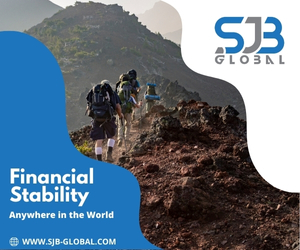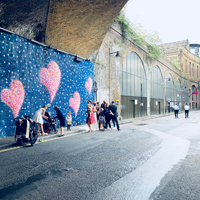10 Things to Know Before Moving to Peru
Summary: If you're planning a move to Peru, here are 10 things expats living there wish they had known before moving to Peru.
Welcome to the vibrant tapestry that is Peru, a country brimming with rich history, diverse landscapes, and a fusion of cultural heritages. Moving to Peru is an adventure of a lifetime, but it's also a journey that requires preparation and understanding. Whether you're drawn by the allure of ancient civilizations, the call of wild nature, or the promise of a fresh start, knowing what to expect can make all the difference. Here are ten essential insights to help you transition smoothly into your new life as an expat in this beautiful South American nation.
1. Understanding Visa Requirements and Residency
Before packing your bags for Peru, it's crucial to get acquainted with the visa and residency requirements. Peru offers various visas, including tourist, business, student, and work visas, each with its own set of rules and durations. For those planning to stay long-term, a Temporary Resident Visa or a Carné de Extranjería (Foreign Resident Card) might be necessary. It's advisable to consult with the Peruvian consulate or an immigration lawyer to ensure you have the correct documentation and to understand the process of becoming a resident, which can sometimes be bureaucratic and time-consuming.
2. Adapting to Altitude in High-Altitude Cities
If you're moving to cities like Cusco or Puno, prepare for the high altitude. Altitude sickness can affect anyone, regardless of fitness level. To acclimate, consider spending a few days at an intermediate altitude and stay hydrated. Chew coca leaves or drink coca tea, a local remedy for altitude sickness. Remember, it's not just about getting through the first few days; living at high altitude can have long-term effects on your body, so give yourself time to adjust and listen to your body's needs.
3. Embracing the Diversity of Climate and Geography
Peru's climate varies dramatically from the arid coasts to the humid Amazon rainforest and the chilly Andean highlands. Depending on where you settle, you might need a wardrobe that's as diverse as the landscape. Coastal cities like Lima have mild winters and warm summers, while the Andes require warm clothing year-round. The Amazon basin is hot and humid, so lightweight, breathable clothing is a must. Research the specific region you're moving to and pack accordingly.
4. Learning Spanish and Local Indigenous Languages
While Spanish is the most widely spoken language in Peru, don't underestimate the prevalence of indigenous languages like Quechua and Aymara. Learning Spanish will significantly enhance your daily life and interactions, but showing interest in local languages can deepen your connection with the community. Language schools and private tutors are widely available, especially in larger cities. Embrace the challenge, and you'll find it opens doors to richer experiences and friendships.
5. Navigating the Healthcare System
Peru's healthcare system consists of both public and private sectors. As an expat, you'll likely rely on private healthcare, which offers higher quality services and shorter wait times. It's recommended to obtain health insurance that covers medical treatment in Peru. Some expats opt for international health insurance plans for broader coverage. Familiarize yourself with the healthcare facilities near your new home and always have a plan for medical emergencies.
6. Understanding the Cost of Living and Local Economy
The cost of living in Peru can be quite affordable compared to many Western countries, but it varies by location. Cities like Lima tend to be more expensive, while smaller towns and rural areas offer a lower cost of living. Housing, food, and transportation can be very reasonable, but imported goods and services are pricier. It's also wise to understand the local currency, the Peruvian Sol, and to manage your finances to accommodate fluctuations in exchange rates.
7. Getting Around: Transportation Options
Public transportation in Peru is diverse, including buses, micros (smaller buses), colectivos (shared taxis), and in Lima, a metropolitan bus system and a single metro line. While these options are economical, they can be crowded and sometimes confusing for newcomers. Taxis are widely available but negotiate the fare before starting your journey, as most don't use meters. For longer distances, domestic flights and long-distance buses are common, with the latter offering various service levels from basic to luxurious "cama" buses with fully reclining seats.
8. Safety and Security Considerations
Like any country, Peru has areas that are safer than others. It's important to stay informed about which neighborhoods are recommended for expats and to take standard precautions like avoiding flashy displays of wealth and being cautious when withdrawing money from ATMs. Petty theft can occur, especially in tourist areas, so remain vigilant and aware of your surroundings. Joining expat communities can provide valuable insights into local safety and help you settle in securely.
9. Cultural Etiquette and Social Norms
Peruvians are known for their warmth and hospitality, but understanding local customs will help you integrate more smoothly. Punctuality is flexible, and events often start later than scheduled. When greeting, a single kiss on the cheek is common among friends, and a handshake is appropriate for first-time meetings. Respect for elders is important, and titles are used frequently. Take the time to learn the social norms of your new community, and you'll earn the respect and friendship of the locals.
10. The Richness of Peruvian Cuisine
Peruvian cuisine is a highlight of living in the country, with its blend of indigenous, Spanish, African, Chinese, and Japanese influences. From ceviche to lomo saltado, the flavors are diverse and delectable. Don't miss out on local markets and street food to experience authentic tastes. Be adventurous with regional specialties, but also be mindful of food safety, especially with raw foods and tap water. Embracing the local cuisine is not just about enjoying delicious meals; it's a pathway to understanding Peruvian culture and history.
Moving to Peru is an enriching experience that promises personal growth and adventure. With these ten insights, you'll be better prepared to navigate the practicalities of your move and to immerse yourself in the wonders of your new home. Welcome to Peru, where every day is an opportunity to explore, learn, and create a life filled with unforgettable moments.
About the Author
 Betsy Burlingame is the Founder and President of Expat Exchange and is one of the Founders of Digital Nomad Exchange. She launched Expat Exchange in 1997 as her Master's thesis project at NYU. Prior to Expat Exchange, Betsy worked at AT&T in International
and Mass Market Marketing. She graduated from Ohio Wesleyan University
with a BA in International Business and German.
Betsy Burlingame is the Founder and President of Expat Exchange and is one of the Founders of Digital Nomad Exchange. She launched Expat Exchange in 1997 as her Master's thesis project at NYU. Prior to Expat Exchange, Betsy worked at AT&T in International
and Mass Market Marketing. She graduated from Ohio Wesleyan University
with a BA in International Business and German.
Some of Betsy's articles include 12 Best Places to Live in Portugal, 7 Best Places to Live in Panama and 12 Things to Know Before Moving to the Dominican Republic. Betsy loves to travel and spend time with her family. Connect with Betsy on LinkedIn.
Additional Information:
- Peru Guide
- Healthcare & Health Insurance in Peru
- Members Talk about Healthcare & Health Insurance in Peru
- Best Places to Live in Peru
- Real Estate in Peru
- Guide to Real Estate in Peru
- Pros & Cons of Living in Peru
- Cost of Living in Peru
- 10 Tips for Living in Peru
- 5 Great Places to Retire in South America
- 2025 Guide to Living in Peru
- Pros and Cons of Living in Peru 2025




